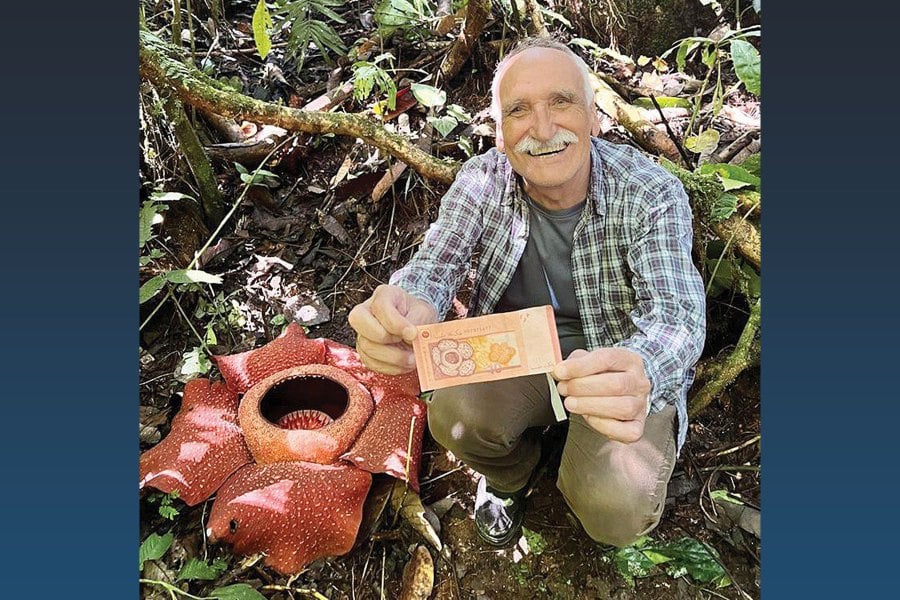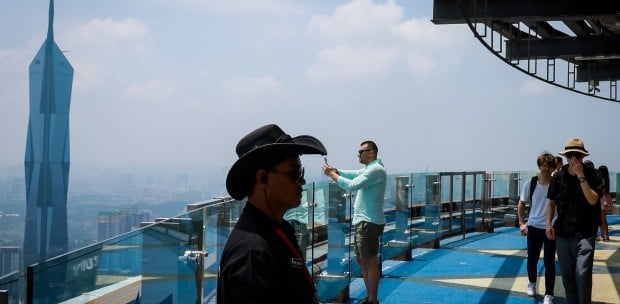I finally saw the rafflesia, the largest flower in the world, during a visit to Malaysia recently.
The Orang Asli had a big role in this. They know the jungle well. They know where rafflesia is starting to blossom, and when it blooms (in nine months!). They report this to a travel agency and then lead tourists to the place.
I saw the flower in Lojing, Kelantan. We left Kuala Lumpur at 5am and arrived at the place hours later.
Our group was small — only 10 people. At the tourist centre, we transferred to a truck with four-wheel drive as the road was rough and narrow.
We drove about 20 kilometres, then continued on foot, accompanied by an Orang Asli guide. The trail wound through the jungle, going up and down.
We also had to cross three small but turbulent rivers with huge boulders.
You could try to cross to the other side jumping from stone to stone, or taking off your shoes.
I preferred the latter for I was afraid of slipping and falling into the water.
On the way, the guide showed us exotic trees and flowers. And finally, the rafflesia — a stunning five-petalled flower with white flecks!
The rafflesia does not have a pronounced stem, leaves and even roots, receiving nutrients from the body of another plant. It is found only in Indonesia, Malaysia, Thailand and the Philippines.
Europeans first learned about plants of this genus from the French surgeon and naturalist, Louis Deschamps, when he was in Java from 1791 to 1794.
But his notes and illustrations, which were seized by the British in 1803, did not become available to Western science until 1861.
The first Briton to see the rafflesia in the Indonesian rainforest in 1818 (at Bengkulu in Sumatra) was Joseph Arnold. A Malay servant working for him discovered the flower and pointed it out.
The flower and genus were later named after Stamford Raffles, expedition leader and founder of the British colony of Singapore.
This is what Arnold said about the discovery of the flower: "Here I am pleased to tell you that I had a chance to meet what I consider the greatest miracle of the plant world.
"I dared to move away from the other members of the expedition, when one of the Malay servants ran up to me... In truth, if I were alone and there were no witnesses, I think I would be scared, so gigantic was this flower, surpassing all flowers that I have seen or heard about."
In some species, such as Rafflesia arnoldii, the flower can be over 100 centimetres in diameter and weigh up to 10 kilogrammes. The flowers smell of rotting flesh, hence the local name, "corpse lily".
An unpleasant odour attracts insects that carry pollen from male flowers to female ones. The seeds are packaged in berries. Flowering continues for several days.
I didn't notice any bad smell though. The guide explained that the only way to detect the scent was to put your nose into a small depression in the centre of the plant. But no one wanted to try it.
Going a little further, we found another flower and saw many embryos resembling mushroom caps. Rafflesia is depicted on the Malaysian RM10 banknote, and each of us was photographed near the flower with a banknote in hand.
It is said that the rafflesia habitats are significantly reduced due to massive deforestation. This is sad because with the right infrastructure, the flower can benefit the tourism sector.
* Pogadaev, writing from Russia, is a former lecturer at Universiti Malaya





